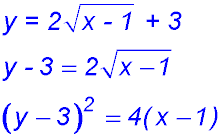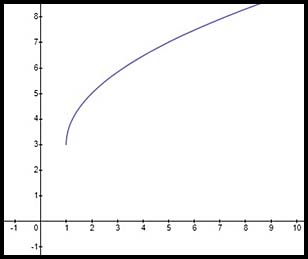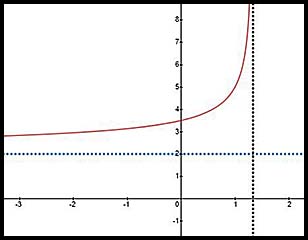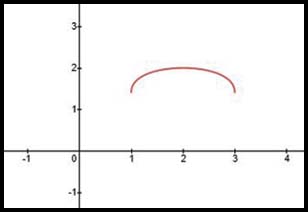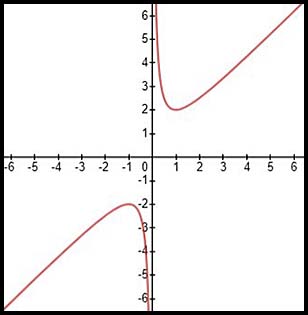Where the techniques of Maths
are explained in simple terms.
Functions - characteristics - Domain and Range.
Test Yourself 1 - Solutions.
- Algebra & Number
- Calculus
- Financial Maths
- Functions & Quadratics
- Geometry
- Measurement
- Networks & Graphs
- Probability & Statistics
- Trigonometry
- Maths & beyond
- Index
For each of the questions in the following table,
determine both the domain and the range of the function
unless otherwise indicated.
| Linear | 1. 2x + 3y = 6 The x and y values can extend in both directions without limit. Hence:
|
2. For y = 3, the x values can extend in both directions but the y value is always = 3. Hence:
|
3. For x = 2, the y values can extend in both directions but the x value is always = 2. Hence:
|
4. For y = -14x, the x and y values can extend in both directions without limit. Hence:
|
|
| Quadratic | 5.
If x becomes greater than 5, the term under the square root becomes less than zero and so we cannot take the square root. But x can take any negative value. The minimum value for y is zero and this occurs when
|
6. y = 5 - x2 The equation describes an upside down parabola with a vertex at (0, 5).
Hence x values can extend y values can extend from and equal to 5 down to - infinity.
|
7. y = x2 - 3 The equation describes a parabola with a vertex at (0, -3).
Hence x values can extend y values can extend from and equal to -3 up to infinity.
|
8. y = (x - 3)2 + 2 The equation describes a parabola with a vertex at (3, -2).
Hence x values can extend y values can extend from and equal to +2 up to infinity.
|
|
| Other basic combinations. | 9. x2 + y2 = 4? The equation describes a circle with centre at (0, 0) and radius of 2.
Hence x values can extend y values can extend from (and including) -2 to +2.
|
10. 
The equation describes a hyperbola with a vertical asymptote at x = 0.2 and a horizontal asymotote at y = 0.
Hence x values can extend y values can extend from Hence each has to be written as a combination of two parts:
|
|
11. The equation describes a circle with centre at (2, -3) and
Hence x values can extend y values can extend from (and including) -6 to 0.
|
12. The equation describes a hyperbola with a vertical asymptote at x = 2 and a horizontal asymotote at y = 0.
Hence x values can extend y values can extend from Hence each has to be written as a combination of two parts:
|
13. The equation describes an exponential curve with a horizontal asymptote at x = 3.
Hence x values can extend y values can extend from 3 (but not = 3) to +∞.
|
14. The equation describes an exponential curve with a horizontal asymptote at y = 3.
Hence x values can extend y values can extend from -∞ up to but not including +3.
|
|
| Radicals - one term | 15. The equation describes the upper half of a circle with centre at (the origin and radius of 3.
Hence x values can extend y values can extend from 0 to +3.
|
16. The equation describes a special type of hyperbola (one outside your syllabus). It has two arcs above the x axis branching away from the axis of symmetry.
Hence x values can extend y values can extend from 0 to +infinity.
|
17. The equation does not describe one of the common curves. It is confined to the positive quadrant. The denominator cannot = 0 so there is a vertical asymptote
Hence x values can extend y values can extend from 0 to +infinity.
|
18. The equation does not describe one of the common curves. It is confined to the region below the x axis (because of the negative sign) and to the left of the asymptote at
Hence x values can extend y values can extend from -infinity to y = 0 (the x axis).
|
|
| Two terms | 19. The equation describes a sideways parabola. It is confined to the positive quadrant with the vertex at (1, 3) - see the following change to the way the equation is written.
|
Hence x values can extend y values can extend from 3 to +infinity.
|
20. 
The equation does not describe one of the common curves. It is better to approach determining domain and range algebraically: It is not possible for x = 4/3 because then the denominator equals zero. So there is an asymptote at that value. x cannot take a value greater than 4/3 because then the term under the square root is negative. When x = 0, y = 3.5. When x approaches a large negative number, the denominator becomes large and hence the fraction approaches zero. Then g(x) approaches 2. |
Hence x values extend y values extend from 2 to +infinity.
|
|
| 21. The equation does not describe one of the common curves. It is better to approach determining domain and range algebraically: In the first term, x cannot be less than 1. In the second term, x cannot exceed 3. Hence x values can equal 1 or 3 or somewhere in between. When x = 1 or 3, one of the two terms = 0 and f(x) = √2. f(2) = √1 + √1 = 2. |
Hence x values extend from y values extend from and = √2 to 2.
|
|
22. 
Remember the question asks for domain and range - not to draw this unusual graph (unless you want to for yourself). Approach the equation algebraically: Clearly the function is odd and so the graph is symmetrical about the origin. The first term shows x cannot = 0. When x approaches 0 from above, the first term approaches +inf. The converse also applies. The second term shows that x can be any number and as x increases, f(x) increases linearly. Now try some other numbers. - say x = ±1. With x between 0 and 1, f(x) is larger than 2 because of the reciprocal. |
Hence x values extend from -∞ to +∞ y values extend from -∞ up to -2 and then from +2 upwards.
|
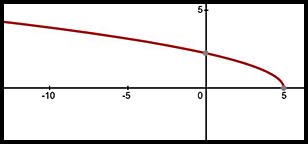

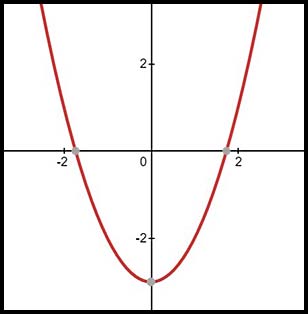



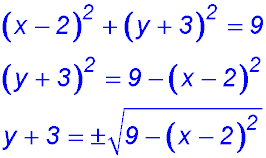
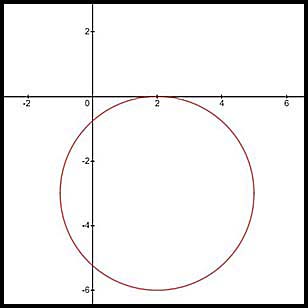

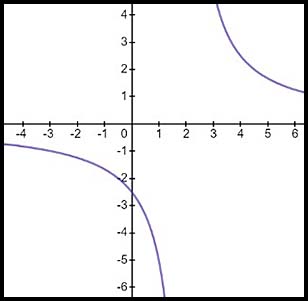
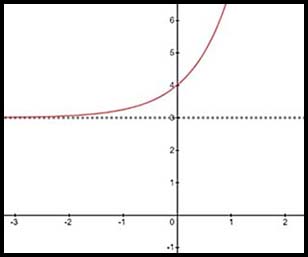
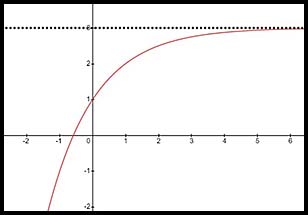


 .
. 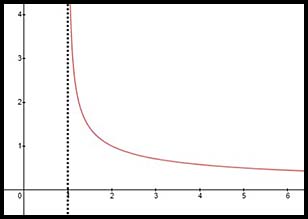
 .
. 
